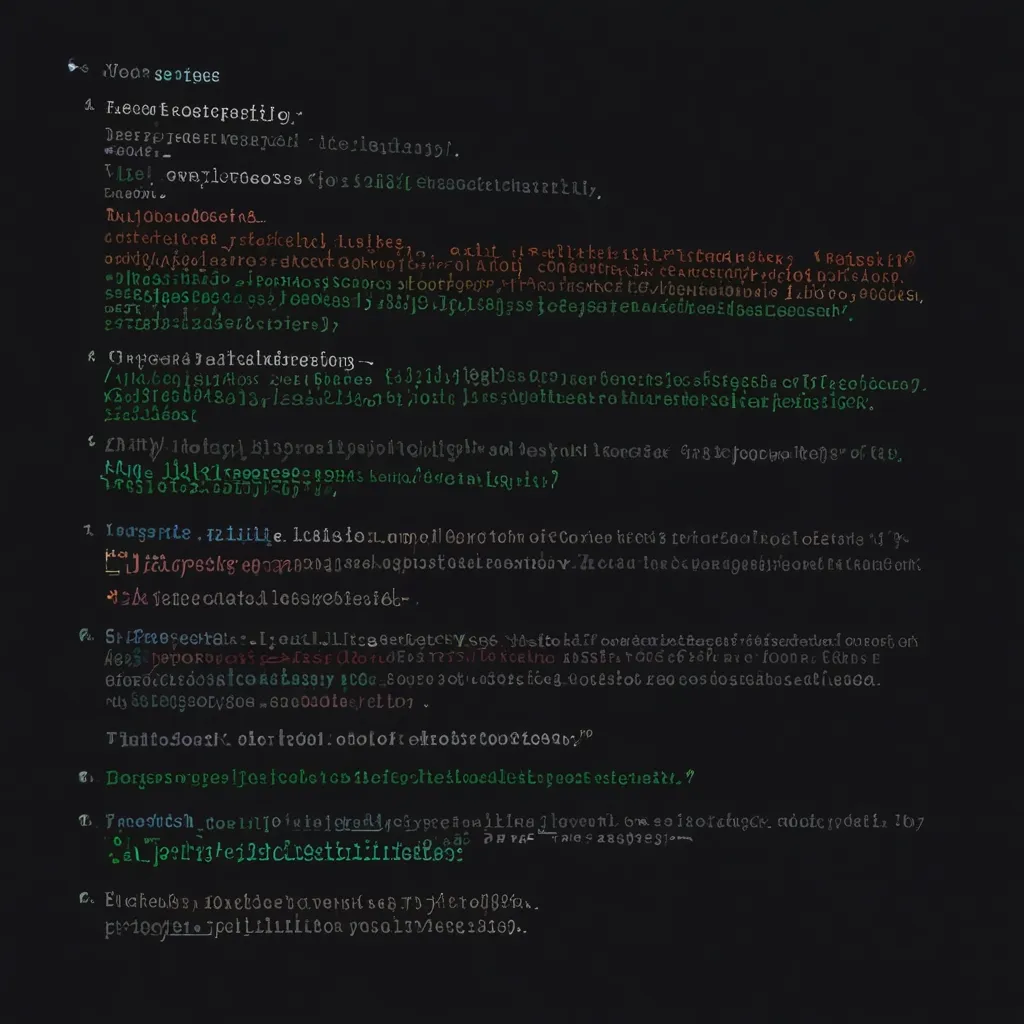As a seasoned JavaScript developer, I’ve encountered numerous performance challenges throughout my career. I’ve learned that optimizing JavaScript code is not just about making things faster; it’s about creating a smoother, more responsive user experience. Let me share eight powerful techniques that have consistently improved the performance of my JavaScript applications.
Minimizing DOM manipulation is a cornerstone of JavaScript optimization. The Document Object Model (DOM) is notoriously slow, and excessive manipulation can significantly impact performance. I’ve found that batching updates and using document fragments for multiple insertions can dramatically reduce the overhead of DOM operations.
Here’s an example of how I use document fragments to efficiently add multiple elements to the DOM:
const fragment = document.createDocumentFragment();
for (let i = 0; i < 1000; i++) {
const element = document.createElement('div');
element.textContent = `Item ${i}`;
fragment.appendChild(element);
}
document.body.appendChild(fragment);
This approach minimizes reflows and repaints, resulting in smoother performance, especially when dealing with large numbers of elements.
Event delegation is another technique I frequently employ. Instead of attaching event listeners to individual elements, I leverage event bubbling and attach a single listener to a parent element. This approach not only reduces memory usage but also improves performance, particularly when dealing with dynamically added elements.
Here’s how I implement event delegation:
document.getElementById('parent-container').addEventListener('click', function(e) {
if (e.target.classList.contains('child-element')) {
// Handle the click event for child elements
}
});
Code splitting has become an essential part of my development process, especially for larger applications. By dividing JavaScript into smaller chunks and loading them on demand, I significantly reduce the initial load time of my applications. This technique is particularly effective when combined with modern bundlers like Webpack.
Here’s a basic example of how I implement code splitting using dynamic imports:
button.addEventListener('click', async () => {
const module = await import('./heavy-module.js');
module.doSomething();
});
Leveraging browser caching is a technique that extends beyond JavaScript, but it’s crucial for overall application performance. I always ensure that my static assets, including JavaScript files, are properly cached. This reduces server requests and improves load times for returning visitors.
Here’s an example of how I set cache headers in an Express.js server:
app.use(express.static('public', {
maxAge: '1d',
setHeaders: (res, path) => {
if (path.endsWith('.js')) {
res.setHeader('Cache-Control', 'public, max-age=86400');
}
}
}));
Optimizing loops is a fundamental aspect of JavaScript performance. I prefer using for…of loops for arrays and for…in loops for objects. I’m always careful to avoid unnecessary operations inside loops, as they can quickly accumulate and impact performance.
Here’s an example of how I optimize a loop:
const arr = [1, 2, 3, 4, 5];
const length = arr.length;
for (let i = 0; i < length; i++) {
// Loop body
}
By caching the array length, I avoid repeatedly accessing it in each iteration.
Debouncing and throttling are techniques I use to limit the rate at which a function can fire. This is particularly useful for resource-intensive operations triggered by events like window resizing or scrolling. These techniques help maintain responsiveness and prevent unnecessary computations.
Here’s an implementation of a debounce function I often use:
function debounce(func, wait) {
let timeout;
return function executedFunction(...args) {
const later = () => {
clearTimeout(timeout);
func(...args);
};
clearTimeout(timeout);
timeout = setTimeout(later, wait);
};
}
const debouncedResize = debounce(() => {
// Handle resize
}, 250);
window.addEventListener('resize', debouncedResize);
Web Workers have become an invaluable tool in my performance optimization toolkit. They allow me to offload heavy computations to a separate thread, keeping the main thread responsive. This is particularly useful for tasks like complex calculations or data processing.
Here’s a simple example of how I use a Web Worker:
// Main script
const worker = new Worker('worker.js');
worker.postMessage({ data: complexData });
worker.onmessage = function(e) {
console.log('Received result:', e.data);
};
// worker.js
self.onmessage = function(e) {
const result = performComplexCalculation(e.data.data);
self.postMessage(result);
};
Lastly, I always strive to leverage modern JavaScript features. ES6+ introduced many powerful constructs that not only make code more readable but also more efficient. I frequently use methods like map, filter, and reduce for array operations, as they’re often more performant than traditional loops.
Here’s an example of how I use these methods:
const numbers = [1, 2, 3, 4, 5];
const doubled = numbers.map(n => n * 2);
const evens = numbers.filter(n => n % 2 === 0);
const sum = numbers.reduce((acc, curr) => acc + curr, 0);
These modern methods are not only more concise but often benefit from internal optimizations in JavaScript engines.
In my experience, performance optimization is an ongoing process. As web technologies evolve, new opportunities for optimization continually emerge. It’s crucial to stay updated with the latest developments and best practices in JavaScript performance.
One area that’s gaining increasing importance is the optimization of asynchronous operations. Proper handling of Promises and async/await can significantly impact the perceived performance of an application. I always ensure that I’m using these features effectively to manage asynchronous flows.
Here’s an example of how I optimize asynchronous operations:
async function fetchData() {
try {
const [userData, postData] = await Promise.all([
fetch('/api/user'),
fetch('/api/posts')
]);
const user = await userData.json();
const posts = await postData.json();
return { user, posts };
} catch (error) {
console.error('Error fetching data:', error);
}
}
By using Promise.all, I can execute multiple asynchronous operations concurrently, reducing the overall waiting time.
Another technique I’ve found valuable is memoization. This involves caching the results of expensive function calls and returning the cached result when the same inputs occur again. This can be particularly effective for functions that are called frequently with the same arguments.
Here’s a simple implementation of memoization:
function memoize(fn) {
const cache = new Map();
return function(...args) {
const key = JSON.stringify(args);
if (cache.has(key)) {
return cache.get(key);
}
const result = fn.apply(this, args);
cache.set(key, result);
return result;
}
}
const expensiveFunction = memoize(function(a, b) {
// Expensive computation
return a + b;
});
Virtual DOM implementations, popularized by libraries like React, have also significantly influenced how I approach performance optimization. By minimizing actual DOM manipulations and performing diff operations on a lightweight JavaScript object representation of the DOM, we can achieve substantial performance improvements.
While virtual DOM is typically handled by frameworks, understanding its principles has helped me write more efficient code, even in vanilla JavaScript applications. I always strive to minimize state changes and group updates to reduce the number of DOM manipulations.
Performance optimization also extends to the build and deployment process. I’ve found that proper minification and compression of JavaScript files can significantly reduce load times. I use tools like UglifyJS for minification and ensure that my server is configured to serve gzipped files.
Here’s an example of how I might configure Webpack for production builds:
const webpack = require('webpack');
const TerserPlugin = require('terser-webpack-plugin');
module.exports = {
mode: 'production',
optimization: {
minimizer: [new TerserPlugin()],
},
plugins: [
new webpack.DefinePlugin({
'process.env.NODE_ENV': JSON.stringify('production')
})
]
};
This configuration ensures that my JavaScript is properly minified and that development-only code is removed in the production build.
It’s also worth mentioning the importance of proper error handling and logging in production environments. While this might not seem directly related to performance, effective error handling can prevent cascading failures that could severely impact application performance.
I always implement robust error boundaries and logging mechanisms in my applications. This not only helps in quickly identifying and resolving issues but also ensures that isolated errors don’t bring down the entire application.
Here’s an example of how I implement a simple error boundary in React:
class ErrorBoundary extends React.Component {
constructor(props) {
super(props);
this.state = { hasError: false };
}
static getDerivedStateFromError(error) {
return { hasError: true };
}
componentDidCatch(error, errorInfo) {
logErrorToMyService(error, errorInfo);
}
render() {
if (this.state.hasError) {
return <h1>Something went wrong.</h1>;
}
return this.props.children;
}
}
While this example is React-specific, the principle of isolating and gracefully handling errors applies to all JavaScript applications.
In conclusion, JavaScript performance optimization is a multifaceted discipline that requires a holistic approach. From code-level optimizations to build process improvements, every aspect of the development lifecycle presents opportunities for enhancing performance. By consistently applying these techniques and staying attuned to emerging best practices, we can create JavaScript applications that are not just functional, but blazingly fast and responsive. Remember, performance isn’t just about speed – it’s about creating the best possible experience for our users.






